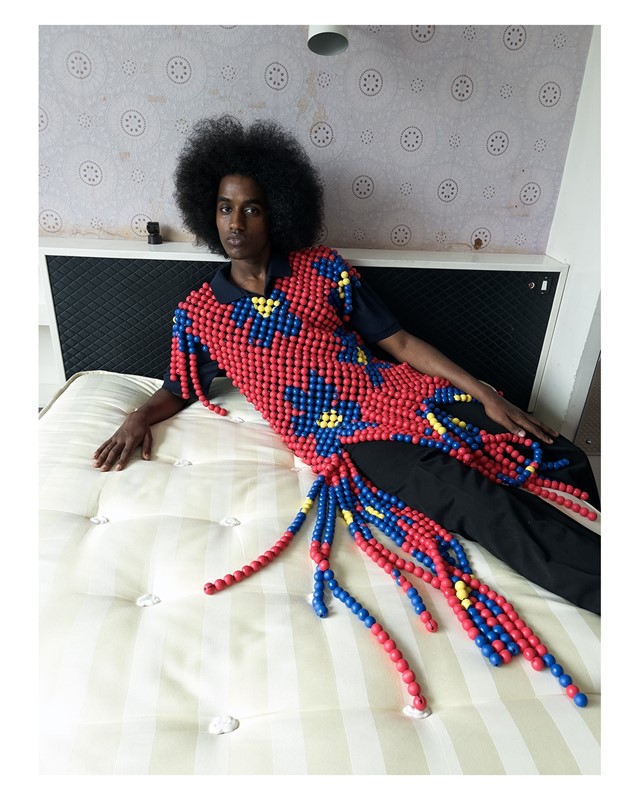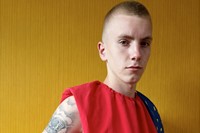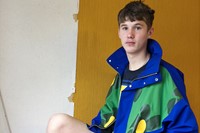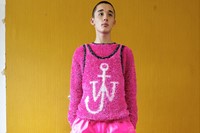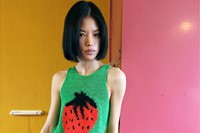“I was thinking about rebellion and going against the establishment,” says the designer of his Spring/Summer 2022 menswear offering, presented in a series of images by Juergen Teller
What would it be like to be a young person today? That was the question at the forefront of Jonathan Anderson’s mind when he was creating his Spring/Summer 2022 menswear collection, presented yesterday in a series of images by Juergen Teller. “You can’t go out clubbing, meet new people, have sex – all that discovery,” he tells AnOther. “Are we at risk of losing a generation through this pandemic, just by them not being able to interact in a normal capacity?”
And so Anderson travelled back to that nexus of teenage discovery, the bedroom, a place of behind-closed-doors experimentation – “the kind of glorification of being who you are or what you want to be,” explains Anderson, who likens the collection itself to “taking a hairbrush and singing into the mirror, going into your wardrobe and trying things on.” As such, Teller’s typically bare images capture a cast of dressed-up young models inside a south London house, peering out of drizzly windows or perching on the end of an unmade bed (in the accompanying ‘show-in-box’ these images are encased in cardboard frames, like those used to for school portraits).
This sense of youthful experimentation pervades the clothing itself, in which recognisable menswear pieces – the crew-neck jumper, the hoodie, the tracksuit – are blown up in size, or decorated with cartoon flowers or strawberries (“how do you turn the strawberry into a smiley face, a club symbol?” he says of this recurring motif). Idiosyncratic details lend the collection what he calls a “provocative wrongness … a kaleidoscopic confusion” – one beaded tabard is likened by Anderson to the beaded curtains used to hang in doorways, another look appears like a large red pillow has been strapped onto the model’s chest. “It doesn't have to make sense,” he says. “It makes you smile.”
Here, in his own words, Anderson tells AnOther the story behind the collection.
“One thing I have had in my head, even when I go to the grocery store or when I’m in Paris, I see young people and imagine if I was at university. You can’t go out clubbing, meet new friends, have sex with different people, all that discovery. Are we at risk of losing a generation through this pandemic, just by them not being able to interact in a normal capacity?
“I was thinking about rebellion and going against the establishment, which you have to do in any form of creativity. When you leave home and discover yourself, you have no parameters of what looks good or bad on you, what works in clothing. A lot of this is about sexual ambiguity. There is a point in everyone’s life where you are discovering who you will become. It’s this cross section of how you wear clothing, dictating how people will see you.
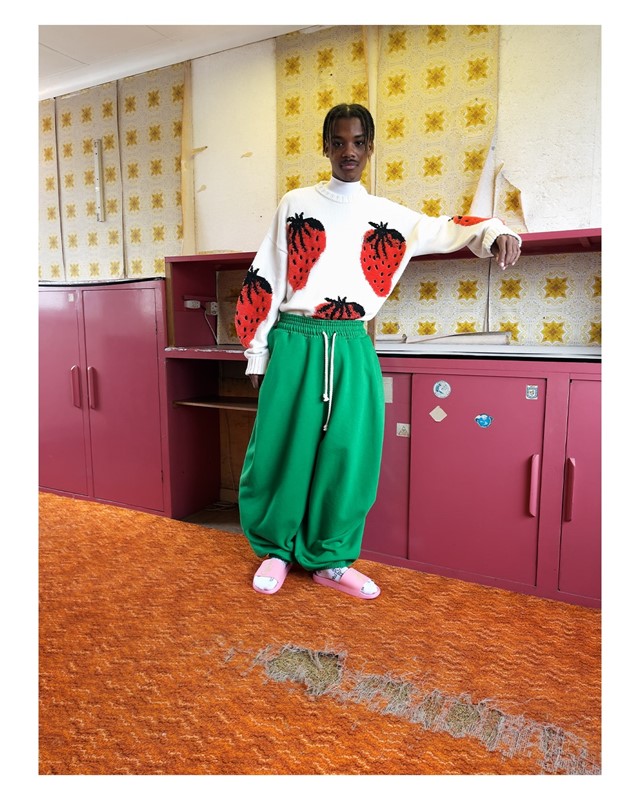
“Maybe it’s just me, and maybe it’s because I’m watching too many Netflix series, but I do think there is this incredible sexual tension out there. I’ve never seen youth culture shed so much clothing. It’s the currency of now. I would never imagine taking a picture of myself on the beach in Speedos, but I love the ambition of that. There’s some sort of sexual thing through the digital world. Men have never looked at themselves in the mirror so much. The phone has become the window. Something private can become public.
“This collection is almost like taking a hairbrush and singing into the mirror, going into your wardrobe and trying things on. There is a part of me that is obsessed by that, the idea of normality within clothing that when you decontextualise it, it becomes something else. By Juergen shooting the kid on the British floral carpet, juxtaposed by the frames, it becomes a conceptual act in itself. The clothing is not conceptual but the execution is.”
